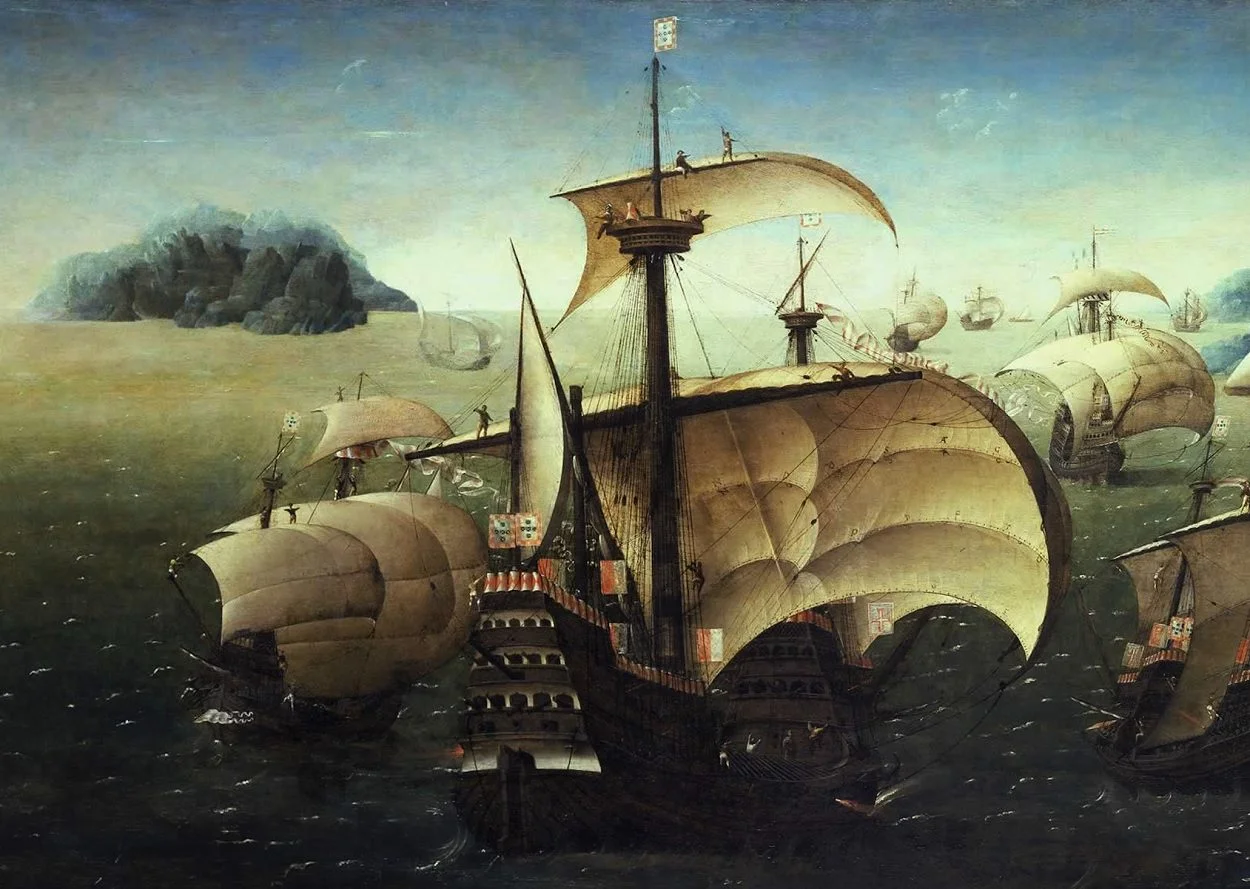The Flor de la Mar, meaning “Flower of the Sea”, was a 400-ton three mast carrack, that sunk in 1511 whilst transporting a large cargo of treasure for the king of Portugal.
A carrack was a carvel-built ocean-going ship: large enough to be stable in heavy seas, and capacious enough to carry a large cargo and the provisions needed for very long voyages.
The Flor de la Mar was constructed in Lisbon in 1502 to sail on the Carreira da Índia (India Run), a route from Portugal to India used by the Portuguese Indian Armadas to ferry troops, officials, missionaries and colonists between Europe and Asia, however, the fleet also engaged in the spice trade to sell on European markets.
The ship was around 36 metres in length and was manned by a crew of around 500 sailors, defended with an armament of 50 guns.
The Flor de la Mar began her maiden voyage in 1502 under the command of Estevão da Gama, a Portuguese navigator and explorer attributed with the discovery of the Trindade and Martim Vaz islands (in modern Brazil).
On the return trip, the ship encountered complications in the currents of the Mazambique channel, notably around Cape Correntes. Eyewitnesses at the time report the ship springing leaks and being forced to anchor at the Mozambique Island for repairs.
The Flor de la Mar returned to India under the command of João da Nova as part of the 7th Portuguese India fleet of 22 ships, carrying D. Francisco de Almeida as the first viceroy of Portuguese India. On the return trip, the ship once again ran into difficulties in the Mozambique channel and was forced to anchor in Mozambique island for some ten months to make repairs.
In 1506, Tristão da Cunha was appointed the commander of a fleet of 15 ships and was sent on a mission by the Portuguese crown to conquer the island of Socotra and to close the trade in the Red Sea. On arriving in the Mozambique channel, the fleet encountered the Flor de la Mar and integrated the ship into a squadron under the command of Afonso de Albuquerque.
The Flor de la Mar participated in the conquest of the cities of Curiati, Khor Fakkan and Ormuz, and the forced submission of Kalhat and Sohar. In 1510 she then supported the conquest of Goa and the conquest of Malacca in 1511.
With the fall of Malacca, the last Sultan, Mahmud Shah, fled across the Malay Peninsula to Pahang on the east coast, where he made a futile effort to enlist Chinese aid. The Portuguese gathered all the riches from the Sultan’s royal palace, loading the treasure onto the Flor de la Mar bound for the court of King Manuel I in Lisbon.
Some sources also report that the ship was carrying a tribute from the King of Siam for Manuel, along with the personal fortune of Albuquerque (including the bracelet of the Rajah of Sabandar), making the cargo one of the largest treasures ever assembled by the Portuguese navy.
Whilst sailing along the Sumatran state of Pasé in the Strait of Malacca, the ship was caught in a storm and wrecked on some shoals. Most of the crew perished, although Albuquerque was able to survive by using an improvised raft.
Sources differ as to what happened to the treasure. Some claim that the Portuguese recovered it from the shallows, supported by a report by Albuquerque which stated: “The monies in gold, silver, copper and tin are coined in Melacca. Much of the tin money was lost in the Flor de la Mar”. Another suggestion is that locals looted the wreck, or that the treasure was buried under sediment or carried out to sea.
Header Image – A carrack, similar to the Flor de la Mar – Image Credit : Public Domain





